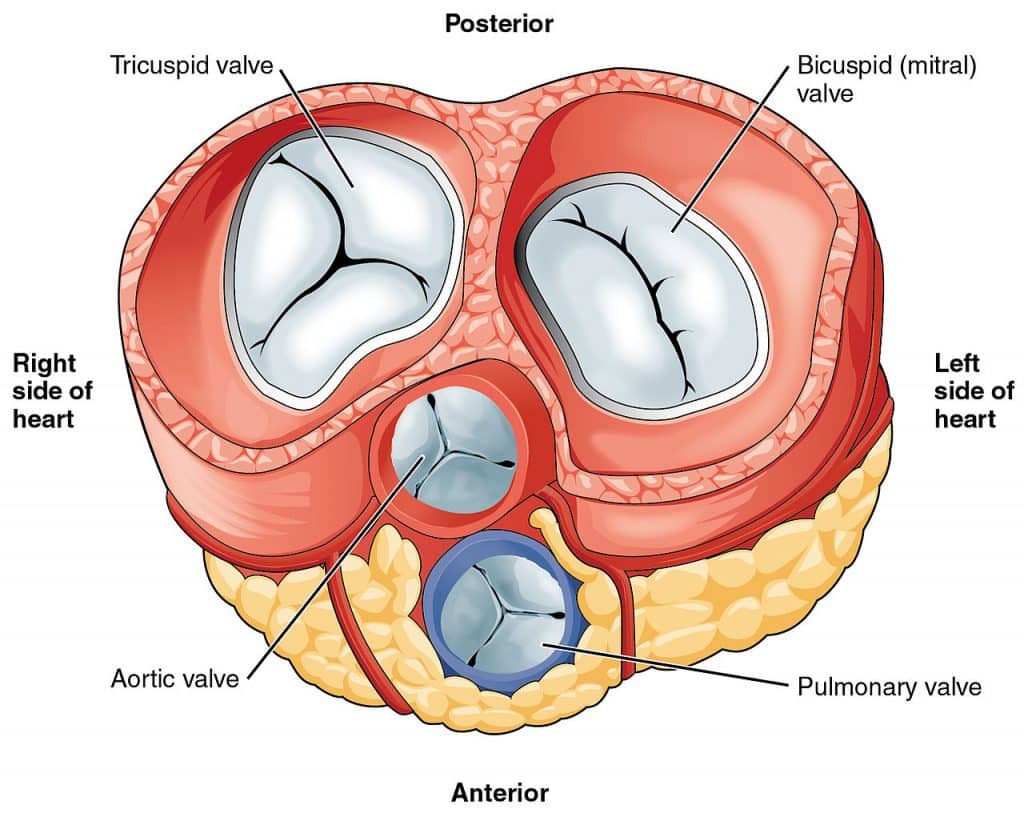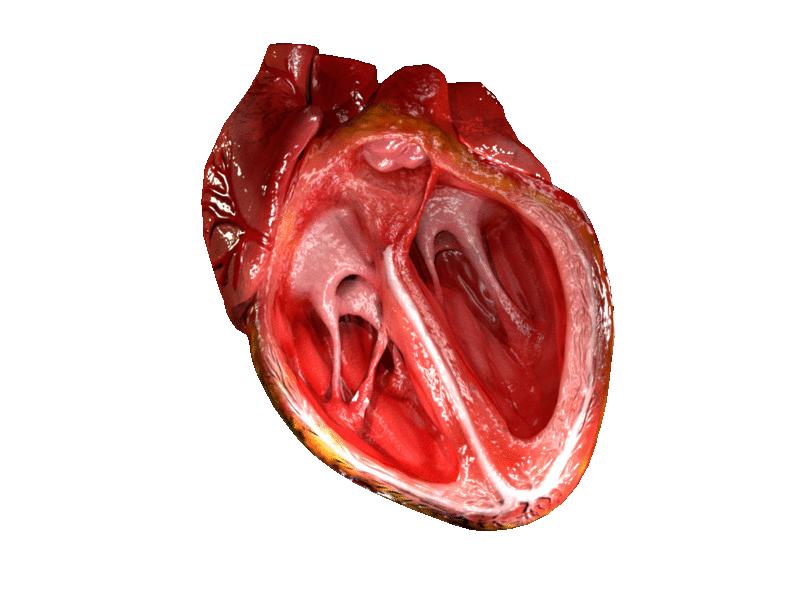
There is only one place in the human body with three duplicate heart valves, called the tricuspid valve. The valves of the heart are structures which ensure blood flows in only one direction. They are composed of connective tissue and endocardium (the inner layer of the heart).

There are four valves of the heart, which are divided into two categories:
- Atrioventricular valves: The tricuspid valve and mitral (bicuspid) valve. They are located between the atria and corresponding ventricle.
- Semilunar valves: The pulmonary valve and aortic valve. They are located between the ventricles and their corresponding artery and regulate the flow of blood leaving the heart.
What does the tricuspid valve do?
The heart pumps blood in a specific route through four chambers (two atria and two ventricles). Every time your heart beats, the atria receive oxygen-poor blood from the body. And the ventricles contract (squeeze) to pump blood out.
As the heart pumps, valves open and close to allow blood to move from one area of the heart to another. The valves help ensure that blood flows at the right time and in the correct direction.
The tricuspid valve ensures that blood flows from the right atrium to the right ventricle. It also prevents blood from flowing backward between those two chambers. When the right atrium fills, the tricuspid valve opens, letting blood into the right ventricle. Then the right ventricle contracts to send blood to the lungs. The tricuspid valve closes tightly so that blood does not go backward into the right atrium.

What is the tricuspid valve made of?
The tricuspid valve is made of three thin but strong flaps of tissue. They’re called leaflets or cusps. The leaflets are named by their positions: anterior, posterior and septal. They attach to the papillary muscles of the ventricle with thin, strong cords called chordae tendineae.
With every heartbeat, those leaflets open and close. The sounds of the heart valves opening and closing are the sounds you hear in a heartbeat.
Does the heartbeat in 3/4 time?
Yes, the heart is closer to 3/4 time than 4/4 time. The waltz is in perfect synch with the heartbeat. Any music slower than the heartbeat tends to relax us, and any music faster than the heartbeat excites.
RadioLab | Our Little Stupid Bodies
There was a lively discussion about how body parts evolved on January 12, 2024 Episode: Our Little Stupid Bodies, question 4. Hear the recording and read the transcript below (permission to post from RadioLab).






























